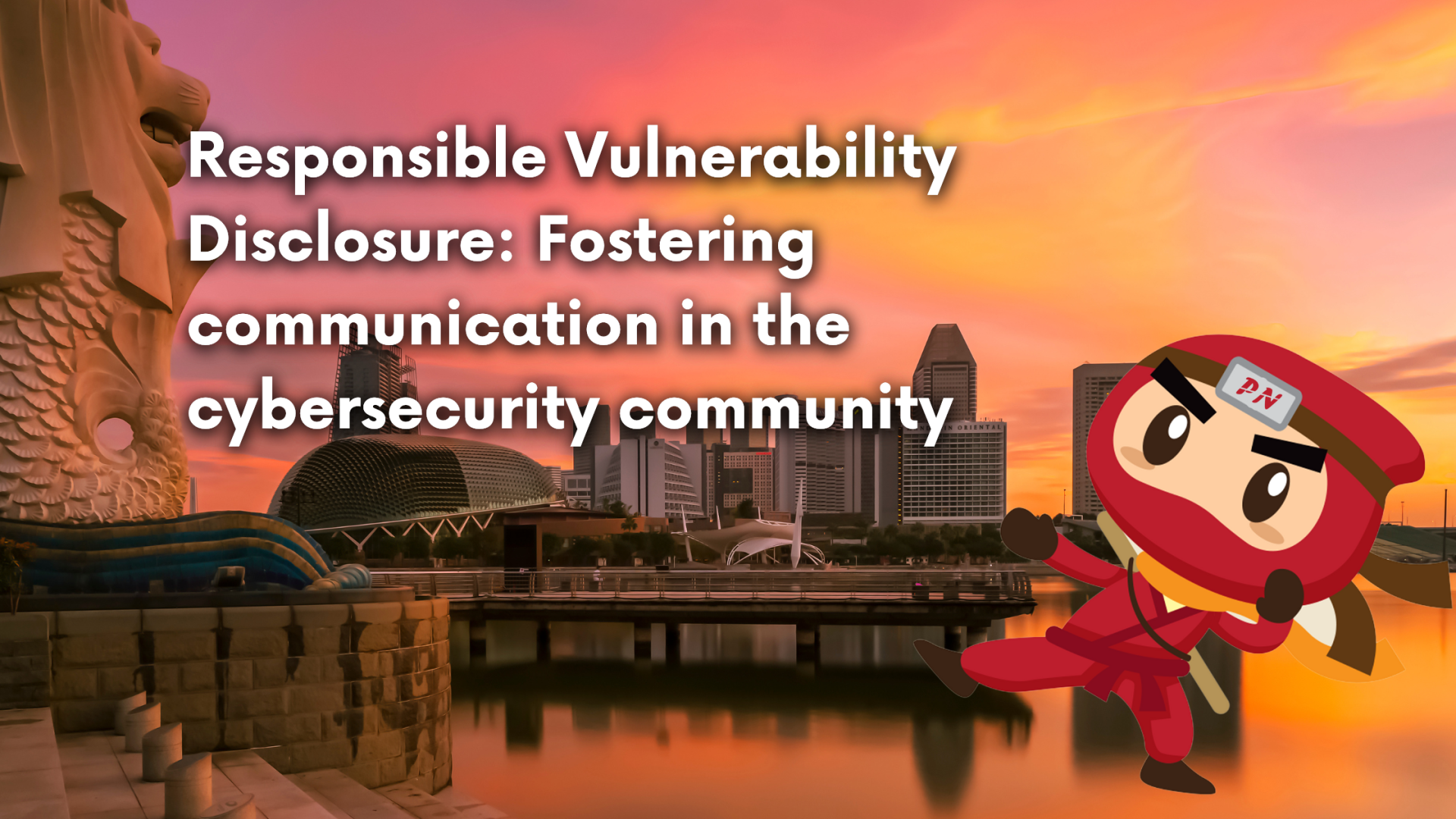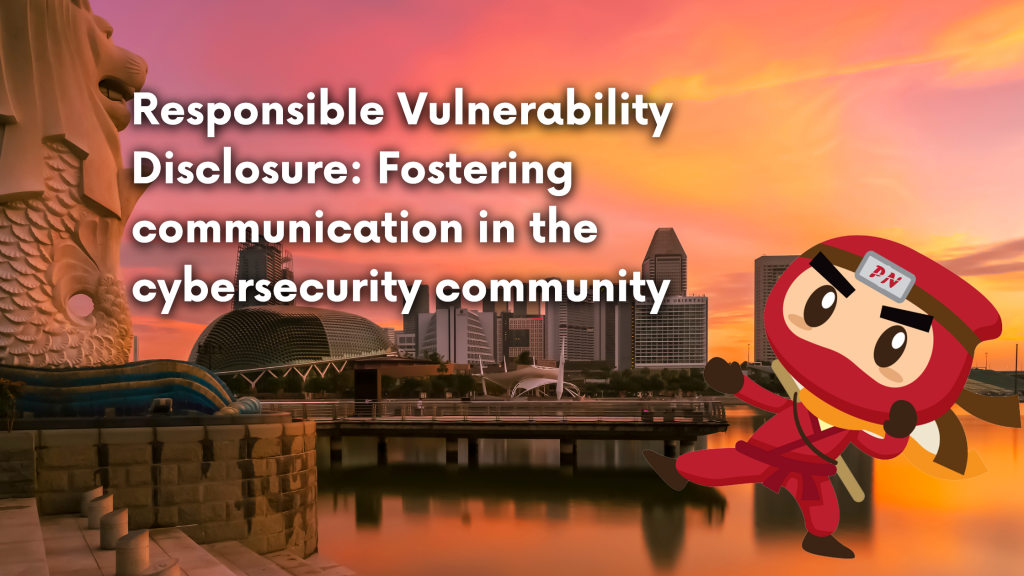KEEP IN TOUCH
Subscribe to our mailing list to get free tips on Data Protection and Cybersecurity updates weekly!







A vulnerability that is present in any organisation is never a good thing. Without noticing and informing those concerned, this could lead to unimaginable damages from the financial penalty imposed by PDPC ranging up to S$1,000,000, and the besmirched reputation ending up losing the trust of loyal customers and potential future clients.
With this, the CSA has come up with Responsible Vulnerability Disclosure (RVD) to foster communication and cooperation in the cybersecurity community, so as to improve cybersecurity and build a trusted and resilient cyberspace.

Responsible Vulnerability Disclosure (RVD) is the process in which the person or organisation responsible for a product or service (the “System Owner”) is informed of a cybersecurity vulnerability in the product or system in order to mitigate or eliminate the risk that the vulnerability will be exploited and minimise or prevent potential harms.
SingCERT supports RVD as a means of fostering cooperation between System Owner(s) and the broader cybersecurity community, and encourages anyone who has identified or suspects a vulnerability in a product or service (the “Informer”) to report directly to the System Owner (s).
System Owners are encouraged to develop their own vulnerability disclosure policies outlining how vulnerability reports will be received and processed, what the reports should contain, approaches to disclosure to affected users and the public, and any rewards policies.
In situations where the Informer was unable to report a vulnerability directly to the System Owner(s), SingCERT may act as a coordinator by contacting and forwarding the report to the System Owner (s). To improve communication and coordination, SingCert may put the Informer and System Owner(s) in direct contact when necessary and appropriate.
Also Read: How GDPR Singapore impacts businesses and its compliance

1. Always act responsibly, in good faith, and with reasonable care, for the sole purpose of reporting suspected vulnerabilities to System Owner(s) in order to help make cyberspace safer. Before taking any action, whenever possible, the System Owner(s)’ permission must be obtained, especially for actions that may negatively impact the System Owner(s) and users.
2. SingCERT recommends that Informers collaborate with System Owner(s) to resolve any validated vulnerability within generally 90 days, subject to their agreement or arrangement. They should refrain from disclosing vulnerability information to third parties or the general public until the System Owner(s) have had adequate time to develop and implement solutions to mitigate or eliminate the vulnerability.
Informants may encounter personal, sensitive, or confidential information during the RVD procedure. Informants should ensure that their actions do not compromise the confidentiality of such information, such as by creating unauthorised copies or disclosing it to unauthorised parties.
3. When performing actions related to assessing a vulnerability, do so deliberately and with due care. This includes ensuring that the actions do not compromise the availability of systems and services and avoiding actions that are not strictly required for assessing, testing, or evaluating the security of the systems and services in order to ensure or protect their security.
Informers should not use disruptive or destructive methods to identify vulnerabilities, such as attacks on physical security, social engineering, denial of service, spam, brute force, or third-party hacking/scanning applications to target websites.
4. Comply with all Singaporean and international laws. This includes adhering to the Singapore Computer Misuse Act (“CMA”) and avoiding conduct that could constitute a violation of the CMA. If you are uncertain about the scope and application of a particular law, you should seek and obtain professional legal counsel. Some illustrative, non-exhaustive examples of actions Informers should not do include:
5. Provide sufficient information on the reported vulnerability and collaborate with the System Owner(s) to validate the suspected vulnerability, including (when available) the following details:

1. Conduct its own verifications and evaluations of any information pertaining to a suspected vulnerability. This includes the possible consequences of exploitation.
2. Contact the Informer if additional information on the suspected vulnerability is required and, if appropriate, work with the Informer to provide simultaneous public disclosure.
If the vulnerability is confirmed, the Systems Owner(s) should:
Communicating a vulnerability at its discovery is a great advantage for organisations, big or small. Not all vulnerabilities can be found readily, especially if the organisation does not subscribe to a penetration testing service. With RVD, this could mean a set of extra eyes to ensure that any vulnerabilities that the organisation may have, out in the open, will properly communicated for the organisation to patch before any bad actor can get a hold of them.
Also Read: 5 Ransomware Singapore facts: What your organisation should know